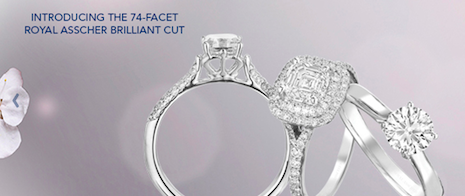 A pure white diamond evokes strong emotions in many consumers. Image credit: GIA
A pure white diamond evokes strong emotions in many consumers. Image credit: GIA
NEW YORK – Luxury products are often purchased as much for their emotional value as for their practical value, and no product comes with as much emotion as a diamond.
Speaking at Initiatives in Art and Culture’s Annual Fashion, Jewelry and Design Conference on Nov. 10, a panel of experts from the jewelry world spoke about the special significance of diamonds and the feelings they evoke in customers. The crux of the discussion was that two diamonds with the exact same technical qualifications could have entirely different emotional effects on the consumer.
"You look at rough or polished diamonds and it gives you an emotion, the people who buy it feel that emotion," said Edward Asscher, president of the Royal Asscher Diamond Company. "It is the symbol of friendship or love or a happy occasion.
An emotional connection
The diamond industry is one of the oldest and most lucrative in the luxury world, and diamonds have been a symbol of status and wealth for generations.
But over time, diamonds have taken on other symbolic meanings as well. In fact, arguably no other product comes with as much emotional resonance as a diamond.
"Gems are perfectly designed containers for meaning," said John Hatleberg, Counterfeiter of famous diamonds for their owners. "The most powerful gem is the diamond in an engagement ring.
"It can take all these emotions and become part of them. People project part of their identity and their history into the jewel."
Diamond engagement rings. Image credit: Royal Asscher Diamonds
The panelists discussed the intensely personal associations that diamonds often have, something that jewelers have played with for decades when advertising diamonds.
Many diamond advertisements rely on themes of love, connection and the momentous occasions in our lives that can be commemorated with diamonds.
The panelists attribute this to each diamond being totally unique thanks to the barely perceptible but nevertheless impactful differences between diamonds that can cause consumers to be completely cold to one diamond and deeply moved by one that is almost identical.
"Two diamonds could have the exact same report, technically they are all the same, but one speaks to you and one does nothing for you," Mr. Asscher said.
"Diamonds have characteristics and character that talks to you. I tell my customers, when you walk into the store, you buy the one that speaks to you."
Feeling the stone
The diamond industry is not without its own problems right now.
As consumers search for brands offering transparent business practices, those pioneering alternative manufacturing processes that lessen environmental and social impact may cause disruption to specific sectors such as fine diamond jewelry.
Royal Asscher Diamonds selection. Image credit: Royal Asscher Diamonds
Diamond sourcing, in particular, is often called into question due to concerns of environmentally harmful mining practices paired with alleged social injustices of those working in the mines. As consumers become increasingly aware of these issues, many have opted to steer clear of diamonds, especially the millennial demographic, as they do not wish to purchase or support anything that may weigh on their conscience (see story).
But in the mind of many of the panelists, even the sourcing of diamonds can mean different things to different people.
"To scientists, they're telling us something about how the earth formed, to business men they tell whether he will make a profit or not, but for all of us its telling us about us as human beings," said John King, chief quality officer at the Gemological Institute of America Laboratory.


